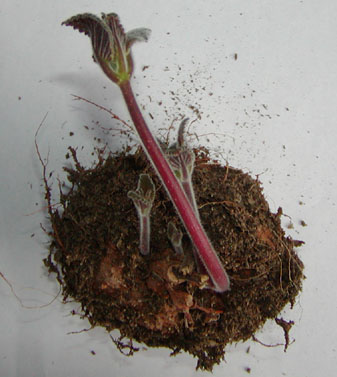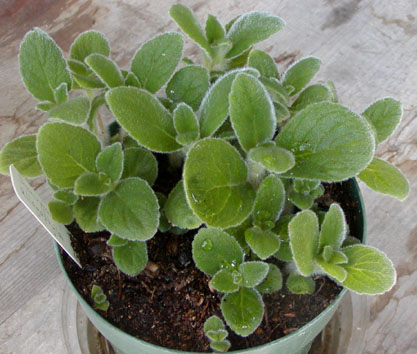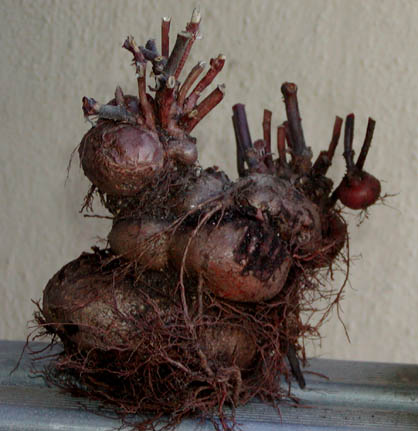|
Species tulips, daffodils, and hyacinths make bulbs because in their native habitats
(mostly central Asia and Mediterranean Europe), summers feature a lot of heat and not much rain.
The fact that a location is plant-friendly four or six or eight months a year does
not mean that it will be plant-friendly the year around.
This has forced plants to develop strategies for coping with inhospitable seasons in
otherwise hospitable climates.
Being an annual is one of the most successful strategies.
Annuals spend the cruel season as seeds, waiting for the return of kindly weather.
The toughest annual seeds can wait years, if need be, for the right time to germinate.
Other plants, such as tulips, survive the hard times by hibernating like bears.
Annuals are restricted in size to as much as they can grow in a single season.
Tulips can spend several growing seasons to reach blooming size,
but an annual has to do it in one year.
Hibernating perennials also have opportunities for vegetative propagation, as anyone
who has naturalized daffodils will know (and appreciate).
As the hospitable period of the year gets shorter, both the annual and hibernation
strategies get less inviting.
The good times come and go too fast.
Some plants have adapted to short growing seasons by slow-growth strategies.
In arid climates, cacti and other succulents sacrifice rapid growth for armor
against the intensity of sunlight.
In arctic climates, plants sacrifice rapid growth for armor against the bitter cold.
All of these strategies have a price.
They all require that resources be diverted from normal growth
and reproduction and predator deterrence.
This means that when we encounter one of these strategies, we must ask ourselves what
otherwise inhospitable conditions are making these costly strategies profitable.
So why do sinningias make tubers?
The most obvious explanation is to survive a dry season.
This might well be correct for the "meadow sinningias" like
S. curtiflora,
S. tubiflora,
S. elatior, and
S. allagophylla.
They grow in places with lots of heat and little rainfall during the summer months.
Drought might also be a factor in the case of species like
S. nordestina,
which are dormant throughout spring and the first half of summer,
and grow in latitudes where it never gets really cold.
Even so, it's hard not to notice that most sinningias in cultivation aren't dormant in the
summer and autumn, the way tulips and daffodils are.
They are dormant in winter.
So what are they escaping?
If not the summer heat, then the winter... what?
Cold?
Rain?
Rats?
Lack of pollinators?
One thing is highly likely: it would cost more to try to keep growing in winter
than it would to go dormant.
Otherwise, sinningias would not go dormant.
|


